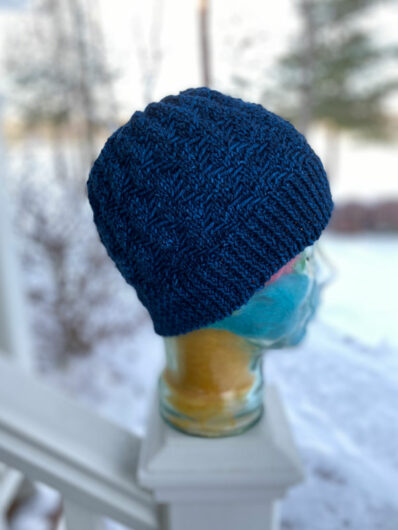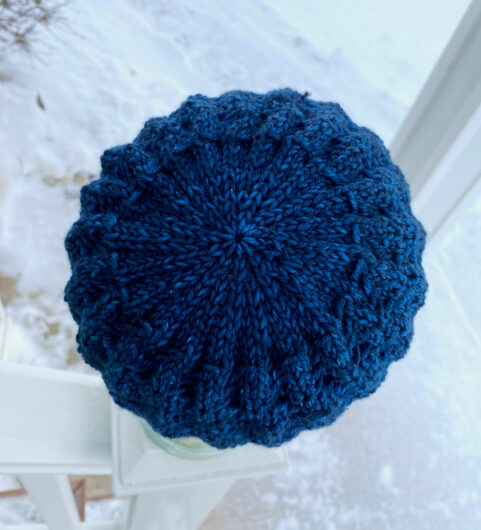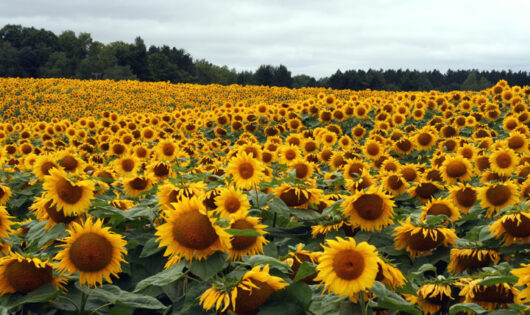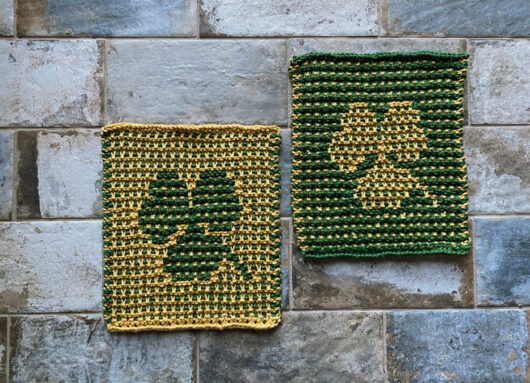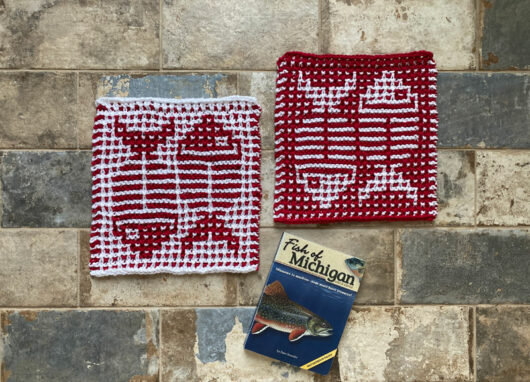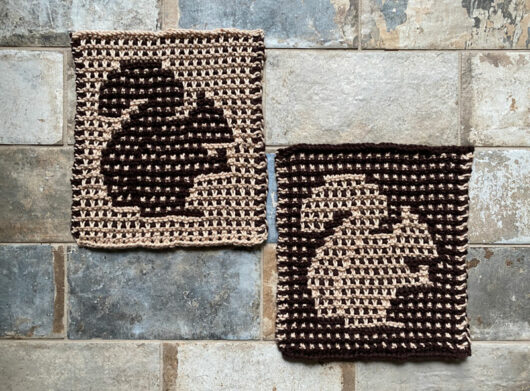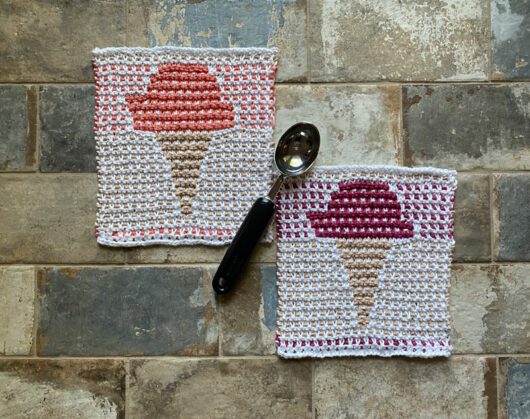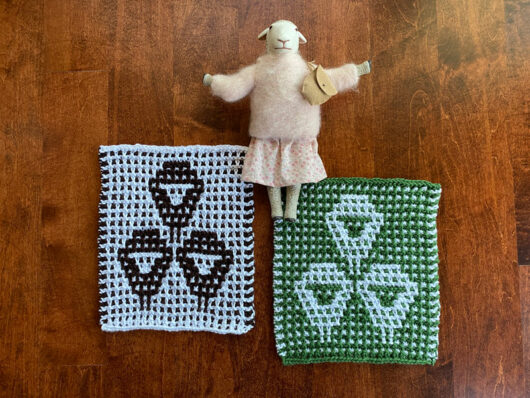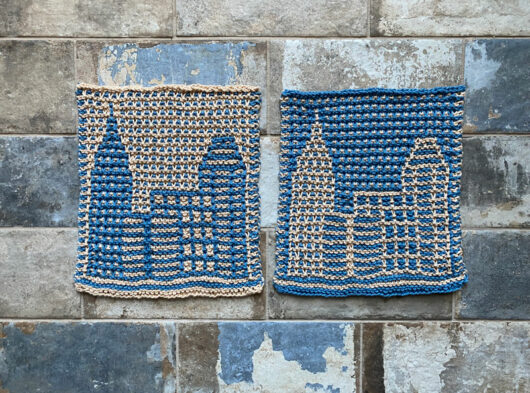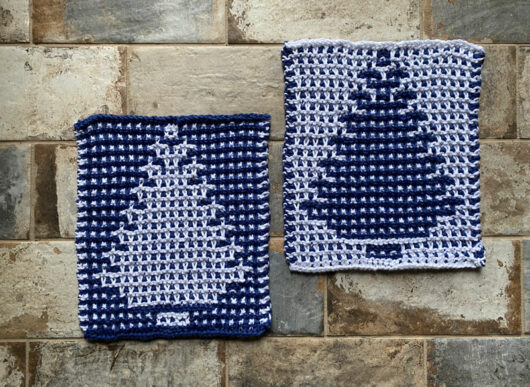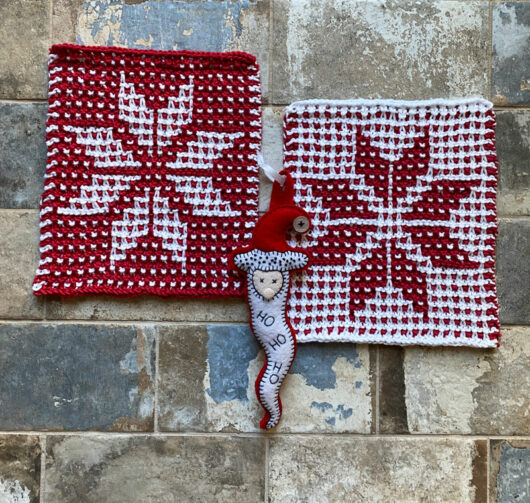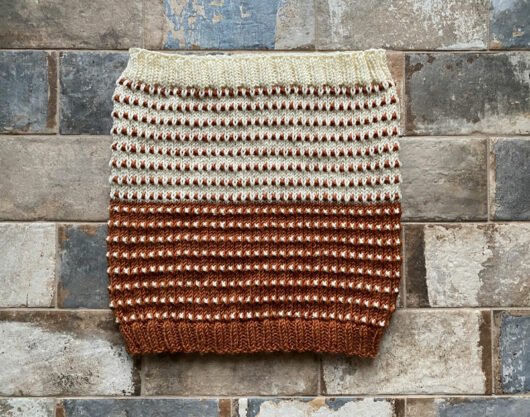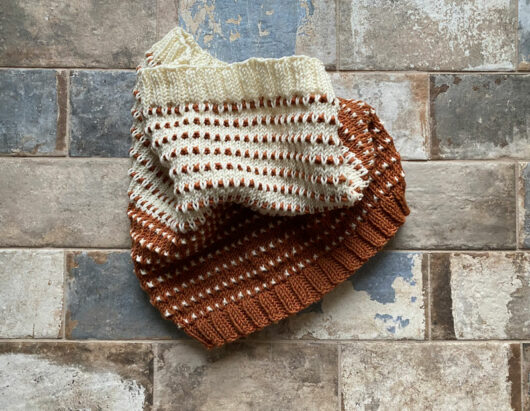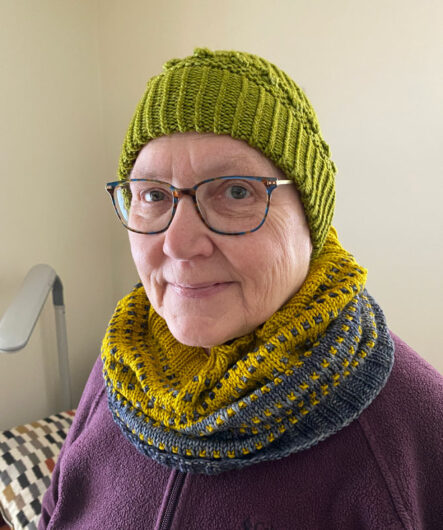This is Maria Socha’s Mimoza. Actually, and obviously since you see Glasshead wearing it, this is my Mimoza. It’s knit in Hikoo by Skacel Simplicity Solid, an excellent DK-weight yarn. It was a fun knit. As always, Socha’s crown decreases are totally beautiful.
I almost always make the largest size in a hat since even little tots in my neck of the woods like oversized hats. This one is a bit tall for beanie wearing in this size–except for the often-discussed pumpkin heads who surround me. The peacock blue shade is such an excellent colorway.
Next up is Subversively Stitched’s worsted weight freebie: Alignment. This one was a real hoot to knit, but I’m fairly sure there’s a hiccup in the pattern. And there is one caution that falls into the idiosyncratic pattern writing category.
At first I missed the idiosyncratic definition for the use of square brackets. They first appear at the clumped-together rounds 2-7 and repeat in other rounds. The brackets are defined to mean “a repeating set of 2 rounds; each round inside the brackets is set inside parentheses like ( ).” Hmm. So, e.g. for the clumped- together notation for rounds 2-7 that means:
Rnd 2: K4, P 1, K104, P1
Rnd 3: 2X2RC, P1, K104, P1.
Rnd 4: repeat rnd 2.
Rnd 5: repeat rnd 3.
Rnd 6: repeat rnd 2.
Rnd 7: repeat rnd 3.
Everything was working out perfectly with this pattern until I got to rounds 20-24. Maybe it was my mistake. But I checked it a few times and couldn’t make it work as written. Then I just followed the photo of the hat. Those rounds are the midpoint of the textured pattern. There are rectangles/almost squares in that section.
Rounds 20-23 call for repeats of P4, K4…with a few specified stitches (knit or purl) before that repeat and a few specified stitches (knit or purl) after that repeat. I had to end the repeat with a P4 to properly form the square. Then the specified stitches at the end of the round didn’t work out. On Rounds 20 and 22, I needed K2 at the end. On Round 21 and 23, I ended with a P4, K1. On Round 24, I ended with a K4…and I wasn’t sure what to do with the last two stitches so I just K2.
The first of the rounds of crown decreases are not placed to align up with the rest. Especially if you’re working in a solid color yarn, it sticks out like a sore thumb. I assume this is necessary to get the stitch count to work out. If I knit this again, I’ll decrease in the last set of garter stitch rounds to hide those necessary decreases.
I knit my Alignment in Berroco Comfort. Easy care and very…well…comfortable.
My next blue hat is Beverly S.’s Slip Sliding Hat. It’s designed for Malabrigo Rios and that’s what I used. The brim starts with an easy modified twisted rib. The body of the hat’s worked with slipped stitches every other row. Those slipped stitches slide back and forth, creating a zigzag pattern.
This turned out to be a fun, quick, knit. I worked 4 repeats of the 12-round pattern and then began the crown decreases because I wanted more of a beanie than a slouchy.
One caution. Be careful to slip the 3 stitches (with the yarn in front) keeping an even and not-too-tight tension. Otherwise the stitches will bunch and the fabric will tend to pucker. At some points I think I wasn’t totally successful in heeding my own caution.
Very nice crown decreases. I was completely satisfied to forego the slipped stitches for the crown.
Speaking of zigzagging, it’s back to yellow. Another Boon Island by Aimee Alexander. This one is knit in Plymouth Yarn Worsted Merino Superwash Solid. Definitely two many nouns in a string. But great yarn.
I especially appreciate this hat’s versatility. A great slouchy. And an interesting beanie.
This final blue hat is Anne Claiborne’s Tenure Track. And I didn’t suddenly learn to crochet. It’s knitted. I love this hat’s in-your-face double ring of big bobbles. The stitch pattern is granite stitch. I’d not worked it before my first Tenure Track. It’s easy and looks great.
The bullseye crown decreases continue the granite stitch right down to the last rounds.
Such an excellent hat.
This used to be an excellent field of sunflowers near where I live. They always filled me with a sense of hope and resilience. The farmer doesn’t plant them anymore.




